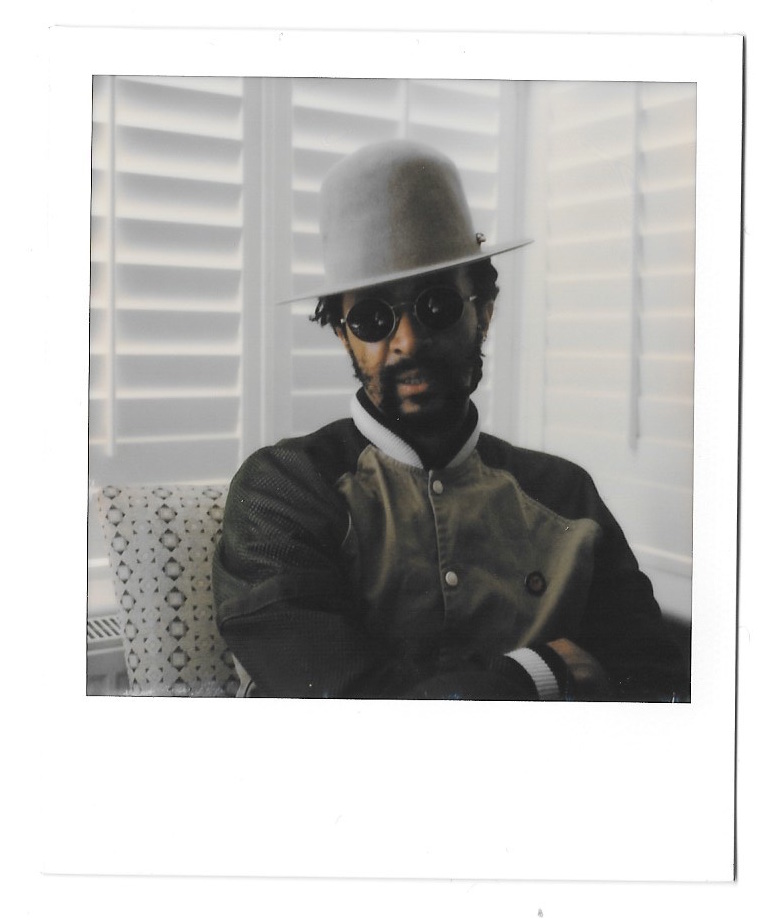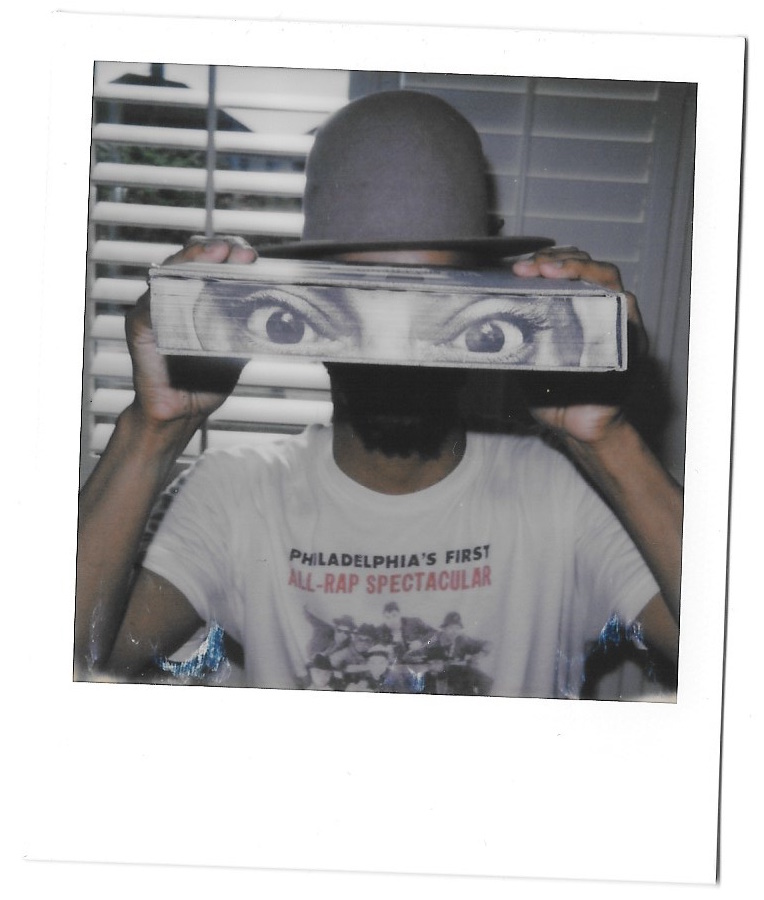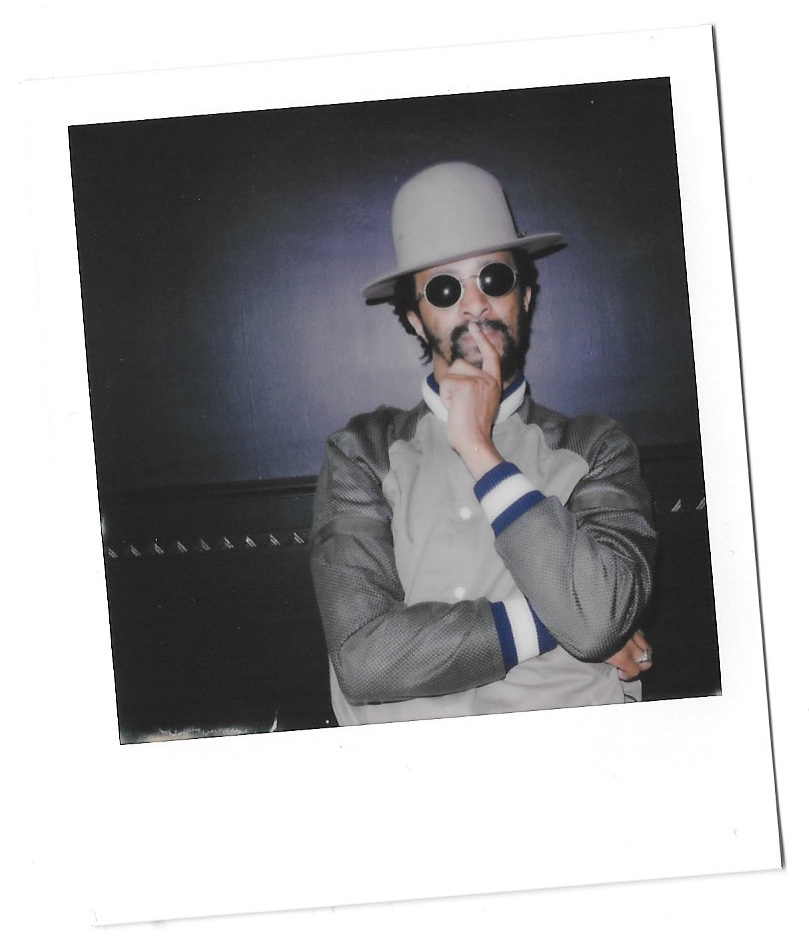As it’s Jacket Required season the most excellent menswear trade-show that’s happening this week has commissioned a series of Q&As that focus on prominent figures within the menswear business (I think my invite got lost in the post) and first up is Harris Elliott who has an impressive CV taking in the wonderful worlds of music, fashion and art. His ‘Return of the Rudeboy’ exhibition at Somerset House proved such a big hit that it lasted for 10 weeks before it moved to Harajuku in Japan.
Since then he’s instigated and art directed the Japanese punk exhibition Punk in Translation, releasing a short but impressive film, Punk: A Feeling of No Future with voiceovers from subculture icons Don Letts, Judy Blame and Roger Burton, and has created and led a variety of projects highlighting that which strays from the mainstream. A self-described “visual storyteller” and instigator of free thought, his work has inspired both those who lived through the movements and those who are rising up through the new generations.

What is the definition of subculture?
Subcultures initially operate under the radar of mass consumerism. It’s a group of people that come together, often unconsciously, who have the same rationale or ideals which relates to music, politics, possibly codes of dress, which they will then express in their own unique way. They live and exist within contemporary culture, but hear, see and create a sound, style or ethos which is markedly different to what is happening en-masse.
Tell us a little bit about Punk in Translation and Return of the Rudeboy, and why you felt it was necessary to highlight these subcultures?
It’s about telling their stories and unique points of views – there’s enough happening in the mainstream that tells what everybody else is doing. When initially thinking about them they might seem random, but when people become aware of the story you’re trying to present, an affinity is formed. Return of the Rudeboy embraced a spirit of defiance and self-worth which has its origins in Jamaica in the 1950s and translated itself to the streets of Britain. In 2016 the motivations are different but the ability to define one’s existence resonates with the culture’s origins by going against the norm; this is presented via a series of images and installation set pieces. Punk in Translation tells of the niche punk scene in Tokyo, and although small, it is very active and traces its lineage back to Britain in the 1970s.
Both projects depict groups of people that have carved their own path by defying the contemporary norms – that is both exciting and inspiring. These projects were about documenting and visualising important movements that are happening today that no one else had shed light on before. In my personal projects I like championing and documenting art and life, showcasing things that I’m inspired by and that I feel have an influence on our day to day lives.

How have the modern times affected subculture from a style point of view – in terms of social media, information, our influences, all accessed digitally and at all times?
It has definitely affected people’s sense of cloth and sense of dress, but I don’t know how much it has specifically affected subculture. Yes, everybody is aware of every single label and trend, but these don’t necessarily form subcultures. Subcultures usually start from the street up, and are not purely based on what designers are doing. When people mobilise only regarding fashion it seems one-dimensional.
Those with an intrinsic style, music taste and political thought process are all interlinked. “Subcultures usually start from the street up.” You can join people on the internet, but when people think they are part of something just because they’ve seen it on online, they don’t understand the merits of it or the back story. They dress by numbers. We see something and we want to replicate and emulate, aspiring to that way of being, but when so many people are passing information around online there is hardly any reference to its how/why/where rationale. It’s not about subcultures; it’s often about self-promotion.
You’ve worked with brands who have been inspired by subculture… Is menswear quite driven by subculture?
Menswear used to be driven by subculture, now it is driven by social media posts, trends and guys who dress up, declare themselves a vlogger and then get paid to endorse a plethora of average brands and take selfies at fashion shows. So many PR agencies use the word ‘culture’ in their agency mantra but it is one of today’s overused words. So many of these agencies don’t care about, let alone understand what culture is, it’s merely a means to sell product. The word ‘culture’ helps the selling process because it has come to mean authenticity; previously the buzz word was ‘heritage’. I’m not sure what it will be next, not that I care.

Do you think new subcultures are being formed?
There needs to be an implosion, where people dissect themselves from their tablets and from their feeds and start engaging with people and not just technology. Though one could say this is a new form of engagement… People power and mobilisation is what starts movements and subcultures.
In an age which is meant to be about information I find very little coming out of individuals’ mouths other than what they find from a feed. Subcultures will continue, of course, but it will take a while before anything new or interesting comes along. Some might say trap – as a subdivision of hip-hop – is a movement or subculture, but now it’s so mass and mainstream, and when it becomes mainstream it cannot remain sub.
So it loses its essence?
Yes you can’t retain integrity when everyone is doing the same thing. That’s not possible. When you go to a club you can become a big group of people debating about where to go. I go with smaller groups who are likeminded, and we go out for this reason and that’s why we are here. When you try to democratise and please everyone you end up as some kind of mush, fed by the mainstream.
What are your thoughts on Punk.London?
Punk.London is essentially a marketing tool for the government to hang on to the fact that as a nation we were once ‘cool’ and responsible for defining culture which has impacted the globe. Promoting an ideology which is about tearing down walls, the establishment and boundaries and alternative ways of thinking, doesn’t really make any sense. It’s a misnomer. The fact that it is called Punk.London is also part of this country’s problems, by the fact that we usually only herald the capital city which is what helps cause dissent in the nation as a whole.
That said, if by their endeavours, young people are able to learn and embrace the punk ideology of do-it-yourself, and be taught why people had to react or carry themselves differently, then hopefully we will have a few new thinkers who can mobilise and be part of new cultures and subcultures, because that’s essentially what’s missing today – free thought and people called to action.
